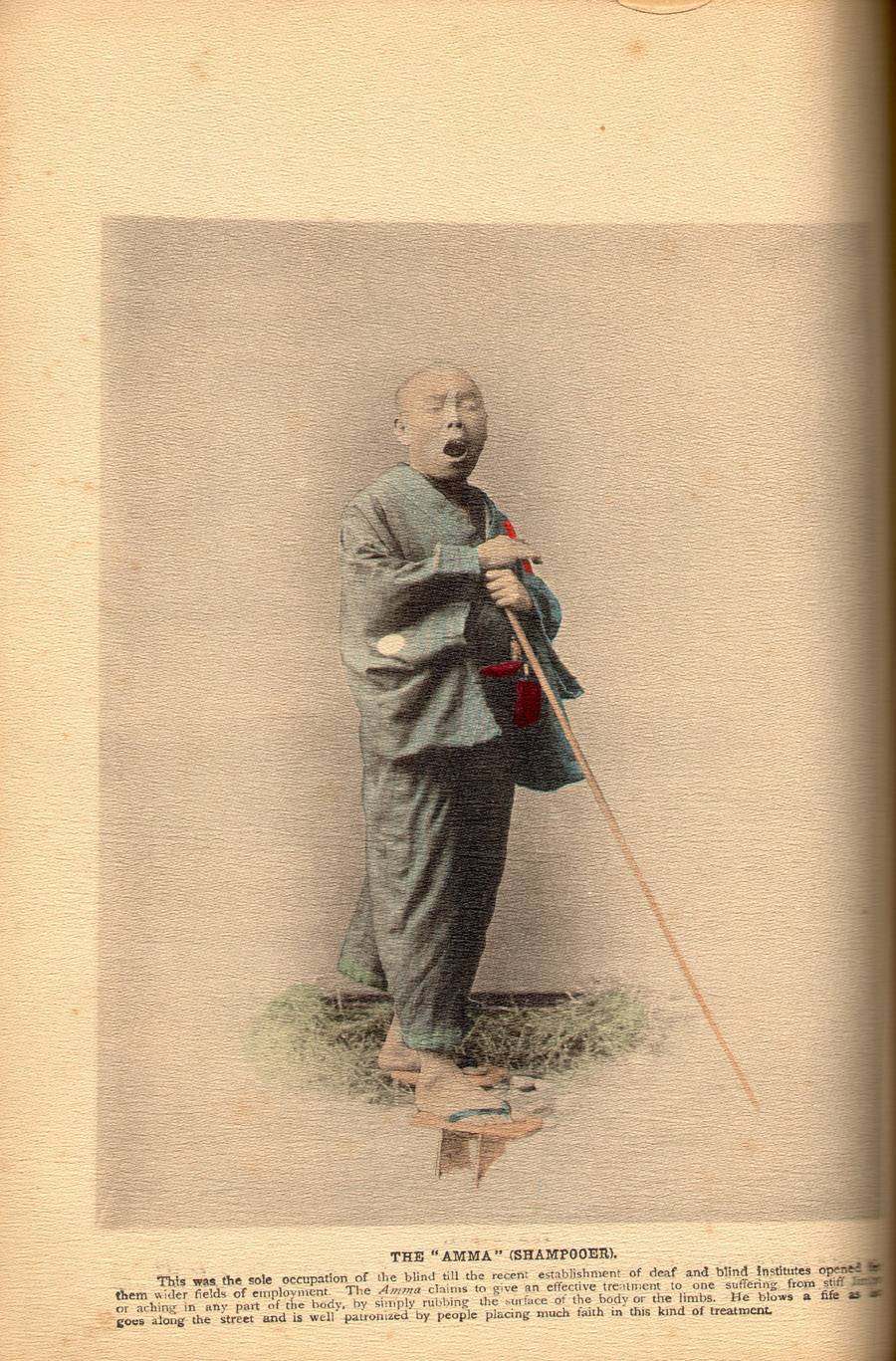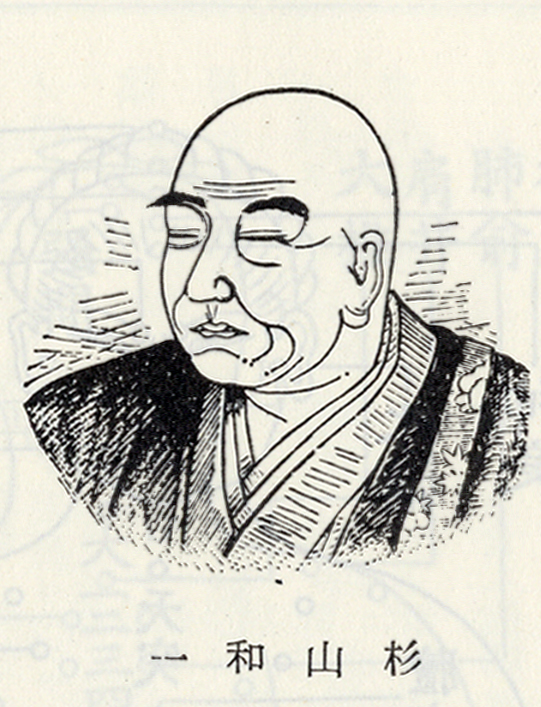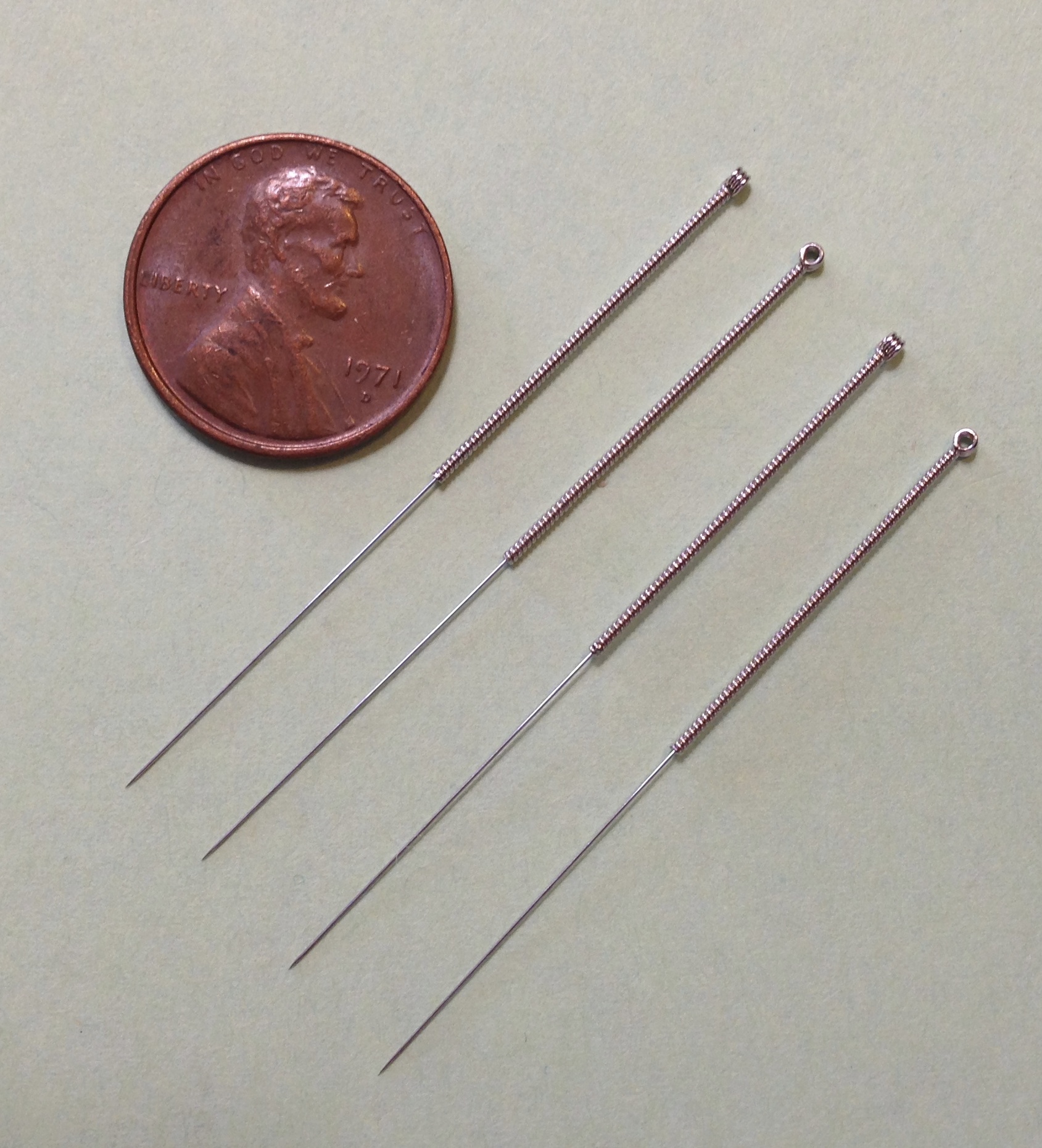|
Shiatsu
''Shiatsu'' ( ; ) is a form of Japanese Bodywork (alternative medicine), bodywork based on concepts in traditional Chinese medicine such as Meridian (Chinese medicine), qi meridians. Having been popularized in the twentieth century by Tokujiro Namikoshi (1905–2000), ''shiatsu'' derives from the older Japanese massage modality called ''anma''. There is no scientific evidence-based medicine, evidence that ''shiatsu'' will prevent or cure any disease. Although it is considered a generally safe treatment—if sometimes painful—there have been reports of adverse health effects arising from its use, a few of them serious. Description In the Japanese language, ''shiatsu'' means "finger pressure". ''Shiatsu'' techniques include massages with fingers, thumbs, elbows, knuckles, feet and palms; acupressure, assisted stretching; and joint manipulation and Joint mobilization, mobilization. To examine a patient, a shiatsu practitioner uses palpation and, sometimes, pulse diagnosis. The ... [...More Info...] [...Related Items...] OR: [Wikipedia] [Google] [Baidu] |
Anma Tebiki (1835, Introduction Page)
''Anma'' () is a practice of traditional Japanese massage; the word also refers to practitioners of that art. Modern shiatsu is largely derived from ''anma''. History ''Anma'' is thought to be of Chinese origin, developing from ''Tui Na''. ''Tui Na'' techniques arrived in Japan during the Nara period (710–793 CE), along with other techniques of traditional Chinese medicine, and were practiced in government-sponsored hospitals. ''Anma'' as a unique system was founded in 1320 by Akashi Kan Ichi. ''Anma'' was popularised in the seventeenth century by acupuncturist Sugiyama Waichi, and around the same time the first books on the subject, including Fujibayashi Ryōhaku's (藤林良伯) ''Anma Tebiki'' (按摩手引 "Manual of Anma"), appeared. The Fujibayashi school is the foundation of modern anma. ''Anma'' (masseurs) were often nomadic, earning their keep in mobile massage capacities, and paying commissions to their referrers. In the nineteenth century, the image of ''anma'' ... [...More Info...] [...Related Items...] OR: [Wikipedia] [Google] [Baidu] |
Anma
''Anma'' () is a practice of traditional Japanese massage; the word also refers to practitioners of that art. Modern shiatsu is largely derived from ''anma''. History ''Anma'' is thought to be of Chinese origin, developing from ''Tui Na''. ''Tui Na'' techniques arrived in Japan during the Nara period (710–793 CE), along with other techniques of traditional Chinese medicine, and were practiced in government-sponsored hospitals. ''Anma'' as a unique system was founded in 1320 by Akashi Kan Ichi. ''Anma'' was popularised in the seventeenth century by acupuncturist Sugiyama Waichi, and around the same time the first books on the subject, including Fujibayashi Ryōhaku's (藤林良伯) ''Anma Tebiki'' (按摩手引 "Manual of Anma"), appeared. The Fujibayashi school is the foundation of modern anma. ''Anma'' (masseurs) were often nomadic, earning their keep in mobile massage capacities, and paying commissions to their referrers. In the nineteenth century, the image of ''anma' ... [...More Info...] [...Related Items...] OR: [Wikipedia] [Google] [Baidu] |
Traditional Chinese Medicine
Traditional Chinese medicine (TCM) is an alternative medicine, alternative medical practice drawn from traditional medicine in China. A large share of its claims are pseudoscientific, with the majority of treatments having no robust evidence of effectiveness or logical mechanism of action. Some TCM ingredients Traditional Chinese medicine#Safety, are known to be toxic and cause disease, including cancer. Medicine in traditional China encompassed a range of sometimes competing health and healing practices, folk beliefs, Scholar-official, literati theory and Confucianism, Confucian philosophy, Chinese herbology, herbal remedies, Chinese food therapy, food, diet, exercise, medical specializations, and schools of thought. TCM as it exists today has been described as a largely 20th century invention. In the early twentieth century, Chinese cultural and political modernizers worked to eliminate traditional practices as backward and unscientific. Traditional practitioners then selec ... [...More Info...] [...Related Items...] OR: [Wikipedia] [Google] [Baidu] |
:Category:Japanese Words And Phrases ...
{{Commons Words and phrases by language Words Words Words A word is a basic element of language that carries meaning, can be used on its own, and is uninterruptible. Despite the fact that language speakers often have an intuitive grasp of what a word is, there is no consensus among linguists on its ... [...More Info...] [...Related Items...] OR: [Wikipedia] [Google] [Baidu] |
Department Of Health (Australia)
Department may refer to: * Departmentalization, division of a larger organization into parts with specific responsibility Government and military * Department (administrative division), a geographical and administrative division within a country, for example: **Departments of Colombia, a grouping of municipalities **Departments of France, administrative divisions three levels below the national government ** Departments of Honduras ** Departments of Peru, name given to the subdivisions of Peru until 2002 ** Departments of Uruguay * Department (United States Army), corps areas of the U.S. Army prior to World War I * Fire department, a public or private organization that provides emergency firefighting and rescue services *Ministry (government department), a specialized division of a government *Police department, a body empowered by the state to enforce the law * Department (naval) administrative/functional sub-unit of a ship's company. Other uses * ''Department'' (film), a 2012 Bo ... [...More Info...] [...Related Items...] OR: [Wikipedia] [Google] [Baidu] |
World War II
World War II or the Second World War (1 September 1939 – 2 September 1945) was a World war, global conflict between two coalitions: the Allies of World War II, Allies and the Axis powers. World War II by country, Nearly all of the world's countries participated, with many nations mobilising all resources in pursuit of total war. Tanks in World War II, Tanks and Air warfare of World War II, aircraft played major roles, enabling the strategic bombing of cities and delivery of the Atomic bombings of Hiroshima and Nagasaki, first and only nuclear weapons ever used in war. World War II is the List of wars by death toll, deadliest conflict in history, causing World War II casualties, the death of 70 to 85 million people, more than half of whom were civilians. Millions died in genocides, including the Holocaust, and by massacres, starvation, and disease. After the Allied victory, Allied-occupied Germany, Germany, Allied-occupied Austria, Austria, Occupation of Japan, Japan, a ... [...More Info...] [...Related Items...] OR: [Wikipedia] [Google] [Baidu] |
Occupation Of Japan
Japan was occupied and administered by the Allies of World War II from the surrender of the Empire of Japan on September 2, 1945, at the war's end until the Treaty of San Francisco took effect on April 28, 1952. The occupation, led by the American military with support from the British Commonwealth and under the supervision of the Far Eastern Commission, involved a total of nearly one million Allied soldiers. The occupation was overseen by the US General Douglas MacArthur, who was appointed Supreme Commander for the Allied Powers by the US president Harry S. Truman; MacArthur was succeeded as supreme commander by General Matthew Ridgway in 1951. Unlike in the occupations of Germany and Austria, the Soviet Union had little to no influence in Japan, declining to participate because it did not want to place Soviet troops under MacArthur's direct command. This foreign presence marks the only time in the history of Japan that it has been occupied by a foreign power. Howe ... [...More Info...] [...Related Items...] OR: [Wikipedia] [Google] [Baidu] |
Tokugawa Period
The , also known as the , is the period between 1600 or 1603 and 1868 in the history of Japan, when the country was under the rule of the Tokugawa shogunate and some 300 regional ''daimyo'', or feudal lords. Emerging from the chaos of the Sengoku period, the Edo period was characterized by prolonged peace and stability, urbanization and economic growth, strict social order, Isolationism, isolationist foreign policies, and popular enjoyment of Japanese art, arts and Culture of Japan, culture. In 1600, Tokugawa Ieyasu prevailed at the Battle of Sekigahara and established hegemony over most of Japan, and in 1603 was given the title ''shogun'' by Emperor Go-Yōzei. Ieyasu resigned two years later in favor of his son Tokugawa Hidetada, Hidetada, but maintained power, and defeated the primary rival to his authority, Toyotomi Hideyori, at the Siege of Osaka in 1615 before his death the next year. Peace generally prevailed from this point on, making samurai largely redundant. Tokugawa sh ... [...More Info...] [...Related Items...] OR: [Wikipedia] [Google] [Baidu] |
Japan
Japan is an island country in East Asia. Located in the Pacific Ocean off the northeast coast of the Asia, Asian mainland, it is bordered on the west by the Sea of Japan and extends from the Sea of Okhotsk in the north to the East China Sea in the south. The Japanese archipelago consists of four major islands—Hokkaido, Honshu, Shikoku, and Kyushu—and List of islands of Japan, thousands of smaller islands, covering . Japan has a population of over 123 million as of 2025, making it the List of countries and dependencies by population, eleventh-most populous country. The capital of Japan and List of cities in Japan, its largest city is Tokyo; the Greater Tokyo Area is the List of largest cities, largest metropolitan area in the world, with more than 37 million inhabitants as of 2024. Japan is divided into 47 Prefectures of Japan, administrative prefectures and List of regions of Japan, eight traditional regions. About three-quarters of Geography of Japan, the countr ... [...More Info...] [...Related Items...] OR: [Wikipedia] [Google] [Baidu] |
Sugiyama Waichi
Sugiyama Waichi (1614–1694) was a Japanese acupuncturist, widely regarded as the "Father of Japanese Acupuncture". An eye-disease in infancy blinded Sugiyama from a very early age. At the age of ten he moved from Kyoto to Edo (Tokyo) to study massage and other therapeutic techniques under Ryomei Irie, one of the most famous medical practitioners of the era. His apprenticeship was short; Irie quickly dismissing him as "dull". On his way back to Kyoto, Sugiyama fasted and prayed for 100 days in a Cave, where he reputedly discovered the secret of the ''shinkan'' ("insertion tube") after pricking himself on a needle wrapped in a leaf. His development of the ''shinkan'', combined with his use of extremely fine gold and silver needles, allowed for comparatively painless acupuncture, and resulted in considerable expansion of the art; for this reason he is often referred to as the "father of Japanese acupuncture". He started around forty-five schools teaching massage and acupuncture ... [...More Info...] [...Related Items...] OR: [Wikipedia] [Google] [Baidu] |
Acupuncture
Acupuncture is a form of alternative medicine and a component of traditional Chinese medicine (TCM) in which thin needles are inserted into the body. Acupuncture is a pseudoscience; the theories and practices of TCM are not based on scientific knowledge, and it has been characterized as quackery. There is a range of acupuncture technological variants that originated in different philosophies, and techniques vary depending on the country in which it is performed. However, it can be divided into two main foundational philosophical applications and approaches; the first being the modern standardized form called eight principles TCM and the second being an older system that is based on the ancient Daoist '' wuxing'', better known as the five elements or phases in the West. Acupuncture is most often used to attempt pain relief, though acupuncturists say that it can also be used for a wide range of other conditions. Acupuncture is typically used in combination with other forms o ... [...More Info...] [...Related Items...] OR: [Wikipedia] [Google] [Baidu] |
Chinese Meridians
Chinese may refer to: * Something related to China * Chinese people, people identified with China, through nationality, citizenship, and/or ethnicity **Han Chinese, East Asian ethnic group native to China. **''Zhonghua minzu'', the supra-ethnic concept of the Chinese nation ** List of ethnic groups in China, people of various ethnicities in contemporary China ** Ethnic minorities in China, people of non-Han Chinese ethnicities in modern China ** Ethnic groups in Chinese history, people of various ethnicities in historical China ** Nationals of the People's Republic of China ** Nationals of the Republic of China ** Overseas Chinese, Chinese people residing outside the territories of mainland China, Hong Kong, Macau, and Taiwan * Sinitic languages, the major branch of the Sino-Tibetan language family ** Chinese language, a group of related languages spoken predominantly in China, sharing a written script (Chinese characters in traditional and simplified forms) *** Standard Chines ... [...More Info...] [...Related Items...] OR: [Wikipedia] [Google] [Baidu] |





